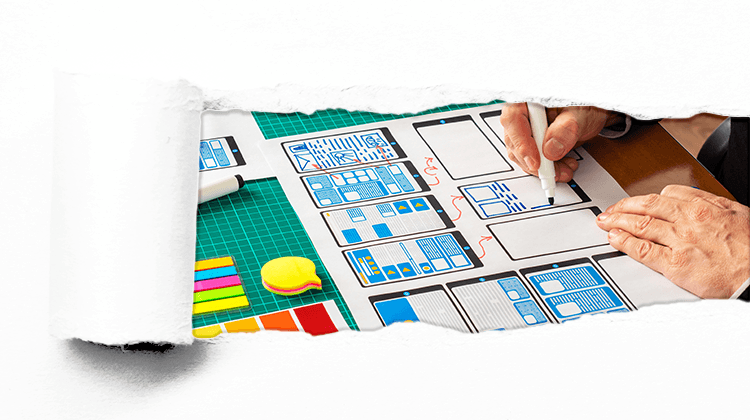If you’re like us, you may have noticed that over time software has progressively become simpler and easier to use. But have you ever stopped to consider why?
Historically, software development followed a top-down design, starting with a general concept then working towards specific needs afterwards. Recently though, companies have started to adopt a bottom-up philosophy, instead starting with, and focusing on, the specific needs of users and developing a solution to meet those needs. In short, software developers have started to adopt a principle known as user centred design.
This approach is core to how we develop at Best Practice Software; it’s how we came to be; we are designed by a Doctor, for Doctors.
A great software experience can only happen with a thorough understanding of the people using the product.
As the name implies, user centred design ensures that our users are at the heart of software we create. By involving users early and often within our development process, we know our design and development decisions are based on the needs and wants of the people who use our software.
User experience designers are the voice of the customer throughout the software development process. We gather knowledge about our user base and test throughout development to verify our assumptions. Software can become cumbersome and frustrating to use without comprehensive testing and input from users.
A core principle is that our products must be simple, logical, and understandable to all our users. We hold regular discussions with a range of customers to ensure we’re supporting practitioners from various disciplines. We began development of our next-generation, cloud-based product after extensive customer discussions and workshops. The brief of these sessions was simple; empathise, connect, and understand the needs of all who work in a busy practice, and what they desire in a cloud-based solution.
There are so many roles within a modern Practice, and we recognise that simply having a list of Practice roles doesn’t mean we know everything about Practices and their staff. Everyone has different life experiences, so two people working in the same role will have different ways of performing similar tasks. Understanding this is key to user centred design, as well-designed software needs to cater to the needs and ability of both of these groups of users.
This is one of the many challenges User Experience (UX) designers face. By talking with people, learning their workflows, pain-points, and daily tasks we begin to get an understanding of what they need to perform their job, and how we can help them achieve that.
A person is so much more unique and complex than their job.
To truly understand our customers and follow the principles of user centred design, our software must support the person, not just perform tasks they need to do. Getting to know the person beyond the keyboard doesn’t come from having a discussion, it comes from the shared experience. A significant, and enjoyable part of being a UX designer is venturing into the real world and visiting our users in their Practices; we observe, we ask questions, we share, we empathise to better understand our customers.
“What is a good day for you?”, “what happens on a bad day?”, and, “what makes those days good/bad?” might seem like odd questions to ask people, but they’re incredibly valuable for a few reasons:
- These stories give us better insight into the environment as a whole
- We learn about their frustrations, and what causes them
- We learn what makes people happy (after all – the goal of a UX designer is to help people and make their lives easier through clever software design!)
- They provide a window into our users’ worlds
“Show us how you last performed that task” turns that window into a door. We can learn to understand why that task is needed, how that task fits into a persons’ day, what information they had or did not have, where that information came from, whether their current method caused any frustration or interruption, providing significant context and life detail.
Only by gathering and merging these different perspectives of our customers are we able to develop the understanding and empathy necessary to design software which supports people.
Our first task when designing user-centred software is to create maps and workflows of the problems we wish to solve. These provide us with a solid foundation for our designs. Layout, interactions, and the ‘meat’ of the designs all follow once we have a solid understanding of the people we’re supporting.
How to be person-first, the next steps: prototype testing, goal setting, and testing again!
The medical industry is evolving, and the needs of the people working in it are complex. It’s imperative that we deliver functionality that is needed and will improve the lives of the people using our software. So, UX designers test throughout the product development process.
Testing and user centred design go together, as through this we ensure we don’t make assumptions, which ultimately reduces the need for rework.
Reducing reworking is important. We verify that our designs will stand up to real-world use before ‘code hits paper’ by testing and simulating real-world scenarios. Observing customers using paper prototypes exposes the strengths and weaknesses in proposed workflows. To the UX designer, paper prototypes are fantastic tools which cut to the heart of the task, testing the workflow without any distractions.
Development uses an agile approach which is well-suited to regular iterative test and improvement rounds. We run small regular sessions to have customers demonstrate how they perform tasks. This feedback loop helps to check our assumptions, confirm we’re aligned with our customers, and are providing valuable solutions to solve their task-related challenges.
Even when our software has been released into the wild, we recognise that there is always room to improve. We employ a diverse range of tactics to get feedback which is fed back into development:
- Repeating our, “show us how you perform this task”, tests
- Visiting Practices and observing how they are using our now-released software
- Talking with support and collecting user feedback
- Reading forums, emails and other online comments
As a UX designer, it’s a joy to know that we’re making a difference in people’s lives. We relish the opportunity to talk with those who use our software, and to hear if there are areas where we can make a difference (and if there are any areas in which we already have!). That’s the beauty of user centred design.
Authored by:
Gareth Chainey & Rachel Hunt
User Experience Designers at Best Practice Software


